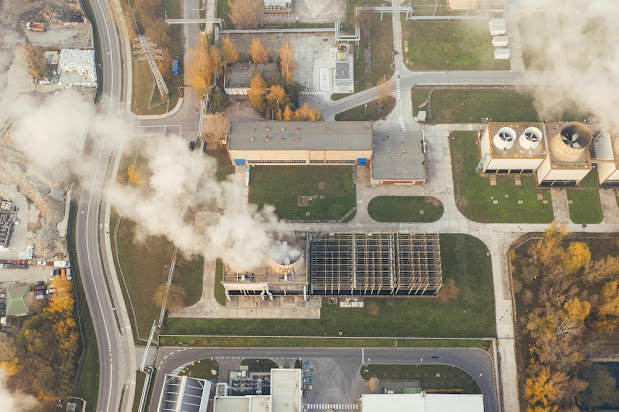Clearing the Air: Understanding Air Filtration Systems
In today's world, where air pollution is a growing concern and indoor air quality can significantly impact health and well-being, the importance of air filtration systems cannot be overstated. From homes and offices to industrial facilities and healthcare settings, air filtration systems play a crucial role in removing airborne pollutants and providing clean, breathable air. In this comprehensive guide, we will delve into the intricacies of air filtration systems, exploring how they work, the different types available, their benefits, and considerations for selecting the right system for your needs.
Understanding Air Filtration Systems:
At its core, an air filtration system is a device or system designed to remove airborne particles, contaminants, and pollutants from the air. These systems utilize various technologies and filtration methods to capture particles of different sizes, ranging from visible dust and allergens to microscopic pollutants and pathogens.
Clearing the Air: Understanding Air Filtration Systems1. Principles of Air Filtration:
- Mechanical Filtration: This is the most common method used in air filtration systems. It involves passing air through a physical filter, typically made of materials like fiberglass, pleated paper, or High-Efficiency Particulate Air (HEPA) filters. These filters trap particles as air passes through, effectively removing them from the air stream.
- Electrostatic Precipitators: These systems use an electrostatic charge to attract and capture particles as they pass through an electric field. The charged particles are then collected on oppositely charged plates or surfaces.
- Activated Carbon Filtration: Activated carbon filters are effective at removing odors, gases, and volatile organic compounds (VOCs) from the air by adsorption, where the pollutants are trapped within the porous structure of the carbon.
- UV-C Germicidal Lamps: UV-C lamps emit ultraviolet light at wavelengths that are effective at destroying airborne pathogens such as bacteria, viruses, and mold spores.
- Ionizers: Ionizers release charged ions into the air, which attach to particles and cause them to clump together, making it easier for filtration systems to capture them.
2. Types of Air Filtration Systems:
- Portable Air Purifiers: These are standalone units designed to purify the air in a single room or area. They typically contain one or more filters and are suitable for use in homes, offices, and other small spaces.
- Whole House Air Filtration Systems: Installed directly into the HVAC system, these systems provide comprehensive filtration for the entire home. They filter the air as it circulates through the ductwork, ensuring clean air in every room.
- Industrial Air Filtration Systems: These are large-scale systems designed for use in industrial settings such as manufacturing plants, warehouses, and production facilities. They are capable of handling high volumes of air and removing a wide range of pollutants.
Benefits of Air Filtration Systems:
1. Improved Indoor Air Quality: By removing airborne pollutants such as dust, pollen, pet dander, and mold spores, air filtration systems help improve indoor air quality, creating a healthier and more comfortable environment for occupants.
2. Allergy and Asthma Relief: For individuals suffering from allergies or asthma, air filtration systems can provide significant relief by reducing exposure to allergens and irritants.
3. Odor Removal: Activated carbon filters are highly effective at removing odors from the air, making air filtration systems ideal for eliminating unwanted smells from homes, offices, and other indoor spaces.
4. Protection Against Airborne Pathogens: UV-C germicidal lamps and other filtration technologies can help prevent the spread of airborne pathogens such as bacteria and viruses, reducing the risk of respiratory infections and illness.
5. Energy Efficiency: Modern air filtration systems are designed to be energy-efficient, consuming less power while delivering effective filtration. This not only reduces operating costs but also helps lower carbon emissions and environmental impact.
Selecting an Air Filtration SystemConsiderations for Selecting an Air Filtration System:
When choosing an air filtration system, several factors should be taken into account to ensure it meets your specific needs and requirements:
1. Filtration Efficiency: Consider the efficiency of the filtration system in removing particles of different sizes, as well as its effectiveness against specific pollutants relevant to your environment.
2. Airflow Rate: Ensure that the system has adequate airflow capacity to provide sufficient air circulation and filtration for the intended space.
3. Maintenance Requirements: Consider the maintenance needs of the filtration system, including filter replacement, cleaning, and other routine tasks.
4. Noise Level: Some air filtration systems can produce noise during operation, so consider the noise level and whether it may be a concern in your environment.
5. Size and Portability: For portable air purifiers, consider the size and portability of the unit, as well as its suitability for the intended room or area.
6. Cost: Evaluate the initial cost of the system, as well as ongoing operating costs such as filter replacement, electricity consumption, and maintenance.
Conclusion:
Air filtration systems play a vital role in improving indoor air quality and promoting health and well-being. By understanding the principles of air filtration, the different types of filtration systems available, and their benefits and considerations, individuals can make informed decisions when selecting an air filtration system for their homes, offices, or other indoor spaces. Whether it's a portable air purifier for a single room or a whole house filtration system for comprehensive air purification, investing in the right air filtration system can lead to cleaner, healthier air and a more comfortable living environment.





.jpg)
No comments